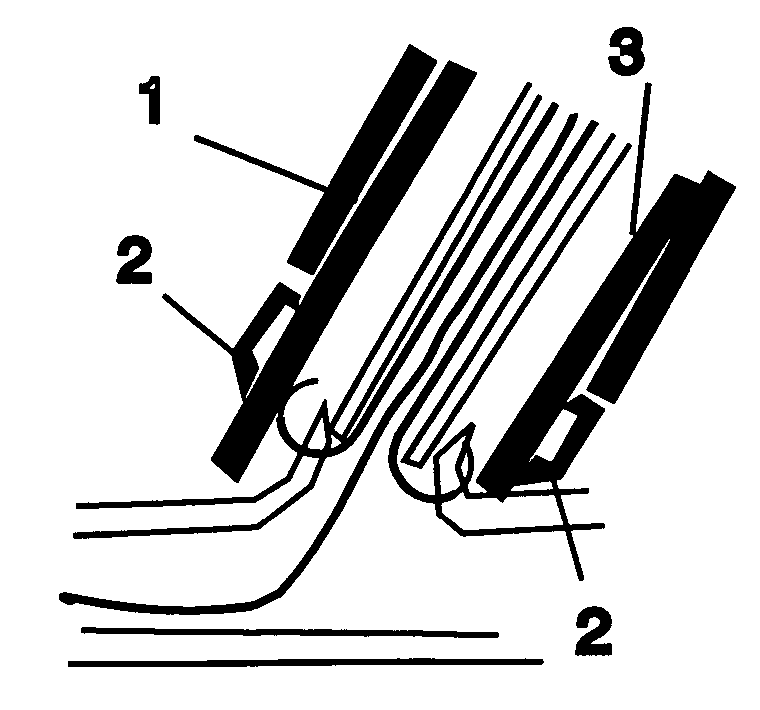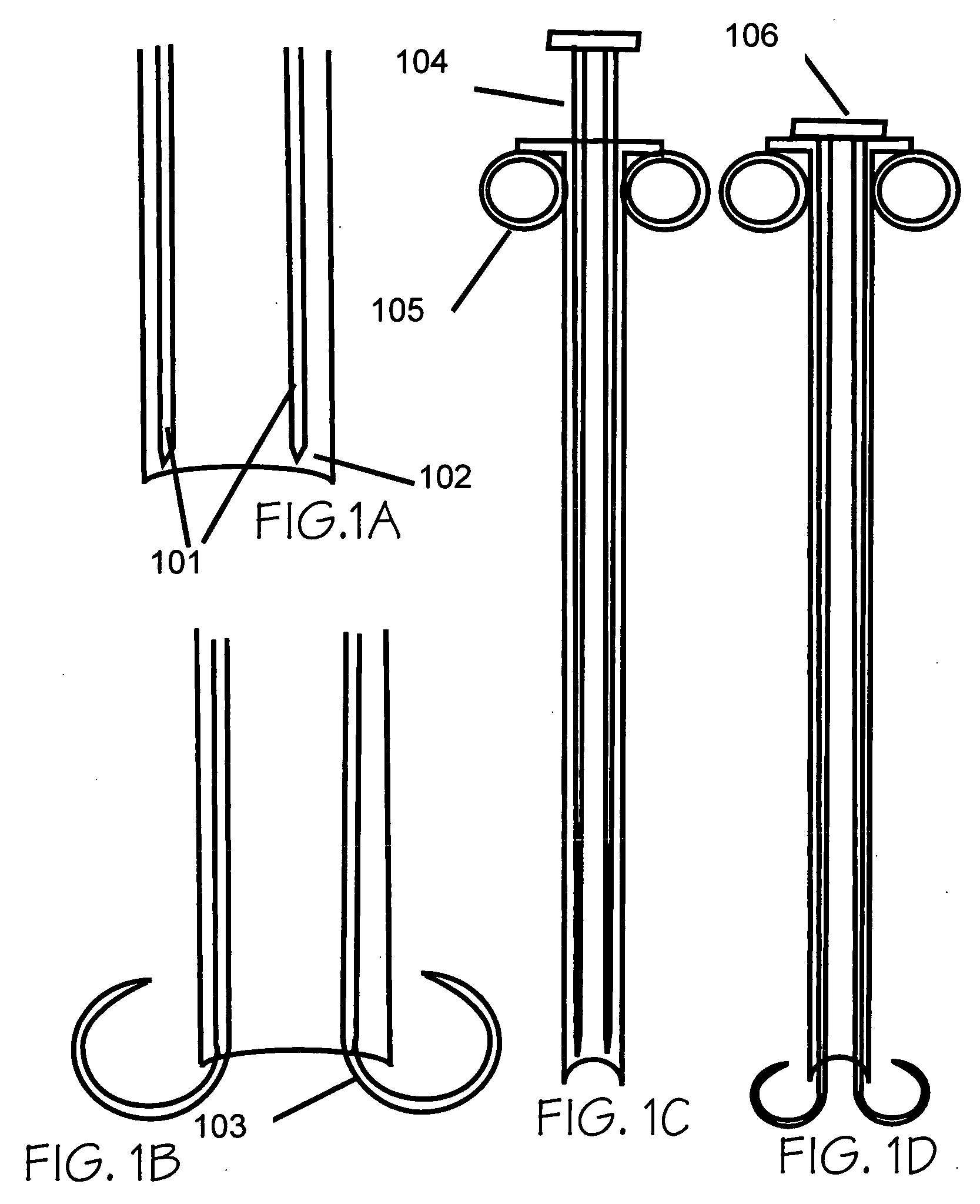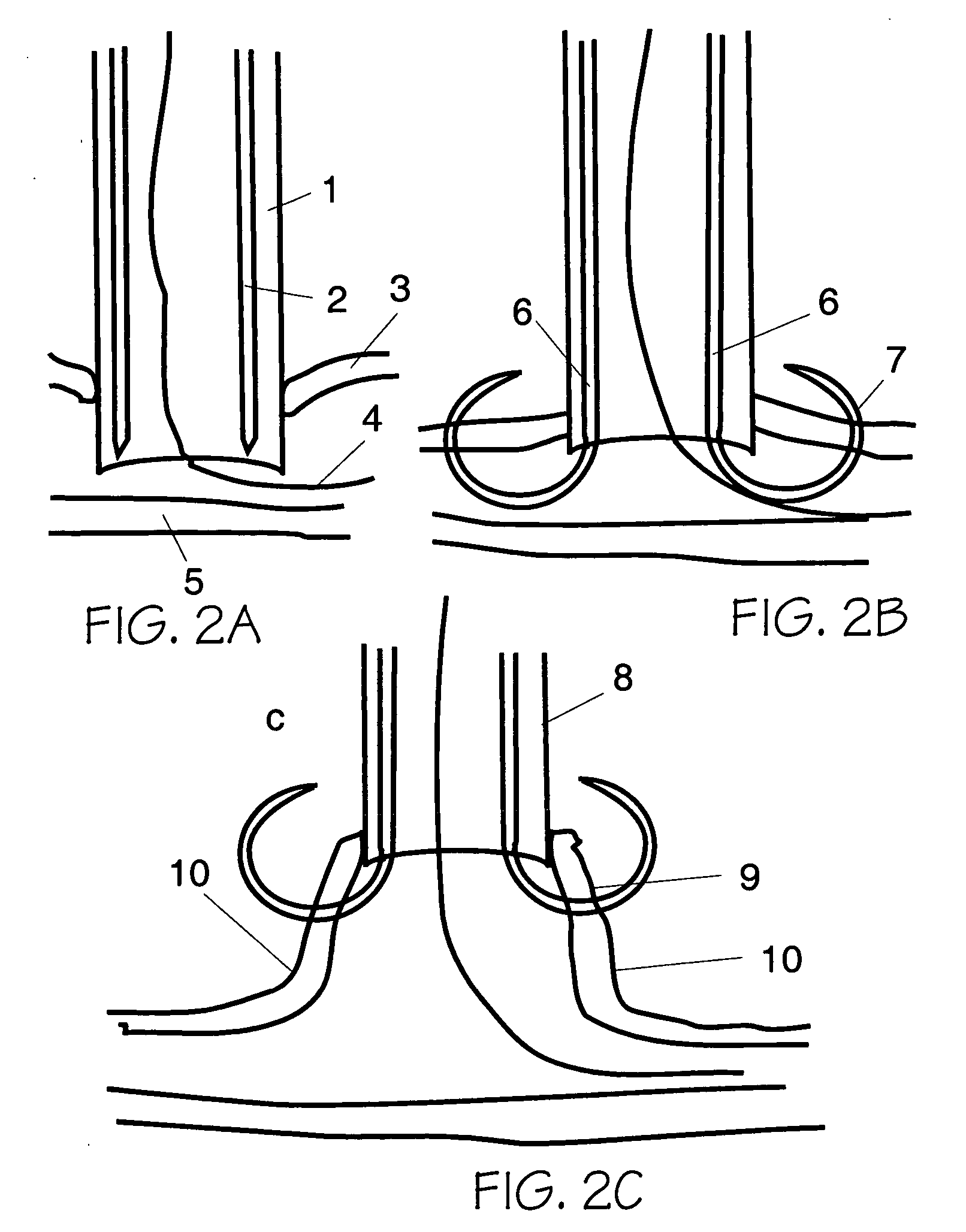Vascular opening edge eversion methods and apparatuses
a technology of opening edge and aperture, which is applied in the field of methods and apparatuses for closing punctures and apertures, can solve the problems of large number of steps, high rate of post-puncture hemorrhage, and considerable complications
- Summary
- Abstract
- Description
- Claims
- Application Information
AI Technical Summary
Benefits of technology
Problems solved by technology
Method used
Image
Examples
Embodiment Construction
[0023] The present invention provides apparatuses and methods for closing a vascular puncture wound or any tissue aperture, for example those resulting from the insertion of a vascular catheter or surgical instrument, trauma or disease. The present invention embraces both apparatuses and methods for closing tissue openings such as vascular punctures. Devices according to the present invention can be inserted in a vascular sheath, the sheath removed or pulled back, a closure device placed over the everter device, the everted device activated by extending the graspers within the blood vessel, the graspers pulled up against and penetrate the vascular vessel wall, the wound edges everted, apposed, and brought up into the closure device, and finally the everted wound edges closed distal to the graspers by the means of an extravascular clip, extravascular suture, extravascular glue or patch, extravascular heat coagulation, or by staples or sutures that are placed through the lips of the e...
PUM
 Login to View More
Login to View More Abstract
Description
Claims
Application Information
 Login to View More
Login to View More - R&D
- Intellectual Property
- Life Sciences
- Materials
- Tech Scout
- Unparalleled Data Quality
- Higher Quality Content
- 60% Fewer Hallucinations
Browse by: Latest US Patents, China's latest patents, Technical Efficacy Thesaurus, Application Domain, Technology Topic, Popular Technical Reports.
© 2025 PatSnap. All rights reserved.Legal|Privacy policy|Modern Slavery Act Transparency Statement|Sitemap|About US| Contact US: help@patsnap.com



